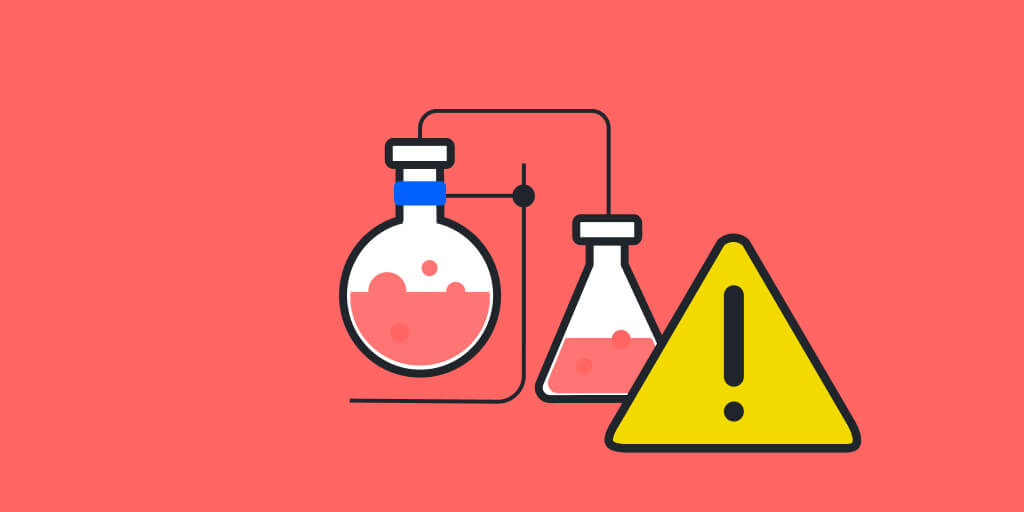A/B testing is a key tool in digital marketing, website design, and product development, helping us understand user behavior. But like any tool, it only works well if used right. At CoffeeX, we often see clients making the same eight mistakes with A/B testing. These mistakes can waste time, and even worse, lead to poor decisions. But the good news is, they can be fixed. By following the advice in this article, you’ll be on the right track to improving your conversion rate.
1. Running Multiple Tests Simultaneously
Testing multiple elements simultaneously might seem efficient, but it often muddies the waters. When you change several things at once, it’s hard to tell which specific change affected your results. If you can’t identify what brought about a positive shift, how can you optimize further?
Solution: Stick to one change at a time. This way, any change in metrics can be directly linked to the specific test. If you’re keen on testing multiple changes, consider multivariate testing. But remember, this approach requires a much larger test audience, so it’s not always feasible.
2. Bad QA
Many companies diligently QA their websites or apps during development. However, this crucial step is frequently overlooked or rushed when it comes to A/B testing. Common oversights include:
- Testing the wrong page.
- Introducing changes that malfunction.
- Implementing alterations that don’t display correctly across devices.
- Incorrectly setting the audience for the test.
Setting up the A/B testing tool improperly, leading to issues like the flicker effect or extended loading times for variations. These technical glitches not only harm user experience but also skew the test results.
Solution: Don’t cut corners with QA in A/B testing. Set up a rigorous QA process with a comprehensive checklist. Invite team members to review changes; fresh eyes can spot potential issues. When adjusting for mobile, always test on an actual device—desktop “mobile emulation” doesn’t always capture the real mobile experience. Always ensure that A/B testing tools are set up correctly to prevent issues like flickering. The bottom line: thoroughness in QA will ensure the most accurate and valuable results.
3. Wrong Tracking Setup
When it comes to A/B testing, a bad tracking setup can throw everything off. Think you’re collecting valuable data? Think again if you change tracking parameters in the middle of a test. You might have to start over, wasting days of data gathering.
But there’s more to it. With GDPR and concerns about cookies, some tracking tools might not catch all the traffic. And if your conversion event trigger isn’t reliable, or if you’ve picked the wrong one, you’re in for a headache.
Solution: Double-check your tracking setup before starting. Stay consistent with your data collection during the test. Make sure your conversion event trigger works as it should. And if you can, track more than one event—it’s a safety net to avoid starting tests from scratch. Lastly, keep in mind the challenges with GDPR and cookies. Choose tracking setups that work well, even in our changing digital landscape.
4. Measuring Low-Quality Events
It’s not just about what you measure; it’s about how those measurements influence your decisions. Relying heavily on events that aren’t closely related to your main goals can guide you down the wrong path. For instance, while a click might seem like positive engagement, it doesn’t hold the same weight as a signup or a purchase.
Solution: Prioritize metrics that matter. It’s okay to use proxies if you’re dealing with smaller audiences, but aim for conversion goals that mirror the company’s main objectives or ‘north star’. Ensure that you’re comparing conversion rates between different versions and sidestep those tempting vanity metrics. Focus on what genuinely drives value and growth for your business.
5. Focusing on the Wrong Elements
It’s easy to get sidetracked, especially if you’re basing your tests on popular best practices or sporadic ideas. While these might yield some results, they don’t guarantee maximum efficiency. Think you’re onto something big with a slight button color tweak? Unless you’re a giant like Amazon, such minor changes rarely cause a dramatic shift in conversion rates.
Solution: Ground your tests in solid research and data. Don’t just follow the herd or shoot in the dark. Understand your audience and what truly matters to them. This approach not only increases your chances of impactful results but also ensures you’re not wasting time on elements that barely register with users. And remember, don’t just aim for small, iterative changes; sometimes, the bigger leaps can lead to more significant growth. Well-informed decisions and focusing on pivotal areas will always trump superficial tweaks.
6. Giving Up After The First Test Fails
In the world of A/B testing, not every experiment will yield the results you anticipate, and that’s perfectly okay. It’s vital to understand that A/B testing, by its very nature, is an exploratory process. You’re venturing into the unknown, seeking to understand what truly clicks with your audience and what falls flat.
When a test doesn’t pan out as hoped, it’s not a sign of defeat but rather an opportunity for learning. A well-constructed test that doesn’t produce the desired outcome can be as enlightening as one that does. It shines a light on what your users aren’t resonating with, information that’s as invaluable as knowing what they do appreciate.
Moreover, A/B testing isn’t a one-and-done affair. It’s an ongoing, iterative journey. Each test, regardless of its outcome, offers insights that can be used to refine and guide subsequent tests. Embracing this iterative spirit is crucial. A test that might be deemed a “failure” today can pave the way for a hugely successful test tomorrow.
Solution: When a test doesn’t go as planned, don’t see it as a failure, see it as a clue. Dig into the data, ask the right questions, and use what you learn to refine your next move. Every test brings you closer to understanding your audience and what really works. Stay curious, keep experimenting, and trust the process.
7. Not Running Tests Continuously
The digital landscape and user behavior are always evolving. If you’re not consistently testing, you’re potentially missing out on optimization opportunities.
Solution: Make A/B testing a regular activity. Continuous optimization should be the goal.
8. Bad Timing
Timing plays a pivotal role in A/B testing. Running a test for a very short span might not give you a full picture, while stretching it out too long can dilute the insights. Furthermore, external factors such as seasonality can significantly impact user behavior. For instance, running a test during peak summer holidays or amidst the Christmas frenzy may yield results that don’t reflect typical user behavior.
Solution: It’s essential to strike a balance. Determine an optimal duration for each test. While it’s tempting to wrap up a test as soon as you hit that enticing 95% statistical significance, that alone doesn’t validate the results. Adequate sample size is crucial. Don’t just rely on built-in metrics from testing tools. Utilize a A/B test duration calculator to ensure your tests have the right duration and sample size. A well-timed test usually spans 2 to 4 weeks, offering a comprehensive view of user behavior, rather than just a fleeting snapshot. Always keep the broader context in mind and adjust your testing periods accordingly to garner accurate and actionable insights.
A/B testing is more than just a method: it’s a journey into understanding your audience’s preferences and behaviors. But like any journey, it’s essential to be equipped with the right tools and knowledge. Mistakes can be part of the process, yet with each test, we learn, adapt, and improve.If you’re looking to delve deeper into this world of experimentation, we’ve crafted a guide that might be just what you need. Explore our Guide to Running a Successful Experimentation Program for comprehensive insights and best practices.









